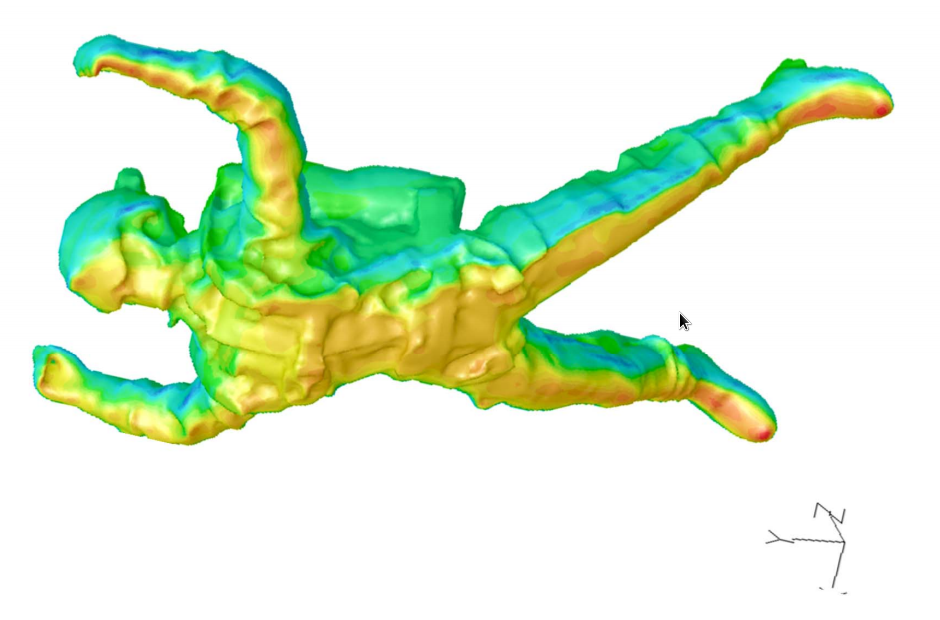This image shows a diagram of the air flow around a sky diver. The diagram shows how as the sky diver falls through “clean” air they create two different types of air behind them. The laminar zone is air that is equally flyable and is depicted as the parallel blue lines. The turbulent air is depicted by the swirling yellow and red lines. That area is what is known as a “burble” and is considered an unsafe area to fly in. This is because a jumper who flies in the “burble” of a fellow jumper will lose all the lift that the “clean” air provides. This could cause them to become unstable and would likely cause an impact between the two jumpers.
Additionally, one should note the multiple axes that the jumper must maintain symmetry about in order to stay stable. That symmetry (and consequently their intentional asymmetry) is what allows the jumper to control their body in the air and move around in their air space.
The first image can be compared to the image below showing how the air hits the jumper’s body. The redder the section, the “harder” the air is hitting the person and the more influence it has on their jump.
Image credit: Flightgear.org using ANSYS Fluent modeling software. Dietz, A. J., Kaszeta, R. W., Cameron, B., Micka, D. J., Deserranno, D. and Craley, J.”A CFD Toolkit for Modeling Parachutists in Freefall”, presented at the 21st AIAA Decelerators Conference in Dublin, Ireland, 23-26 May 2011. Paper AIAA 2011-2589


